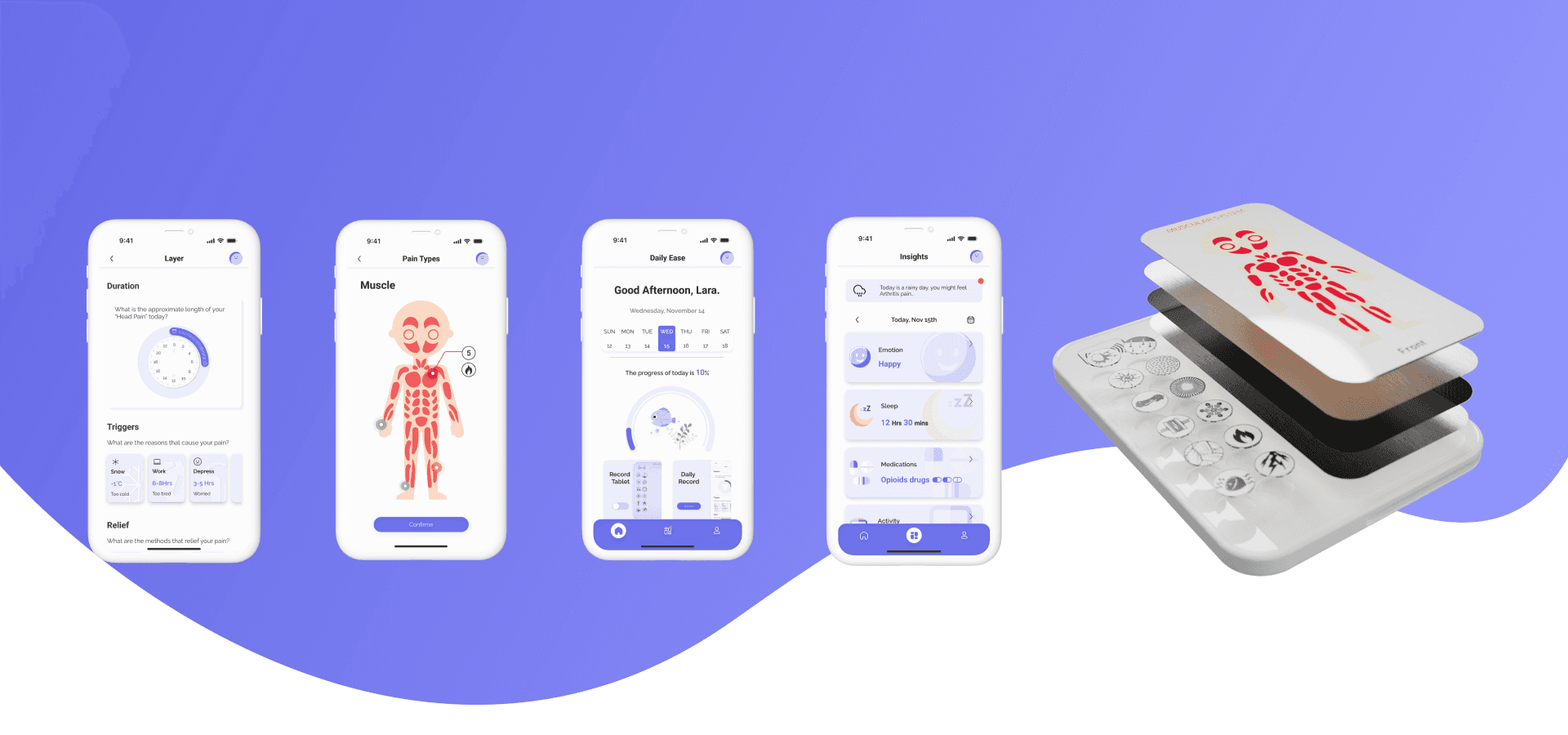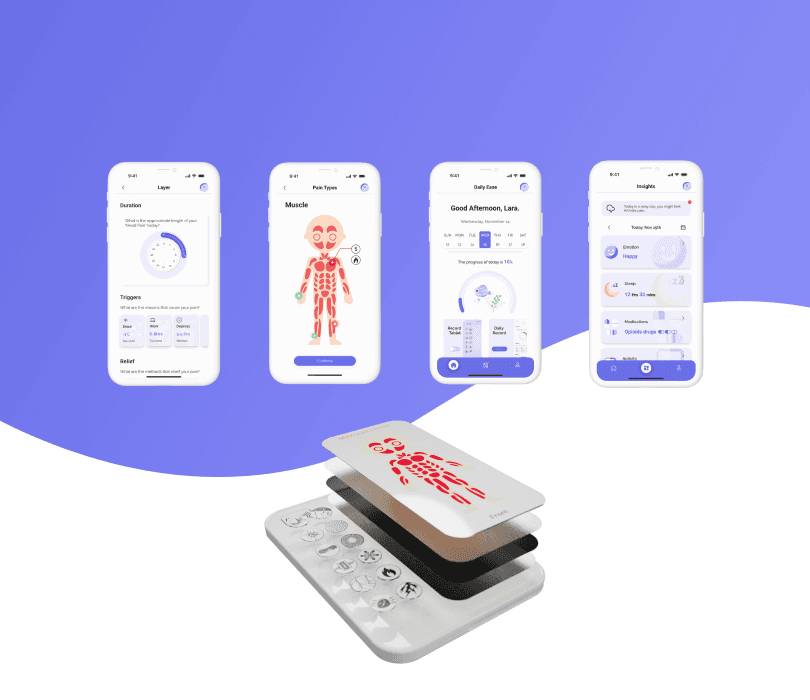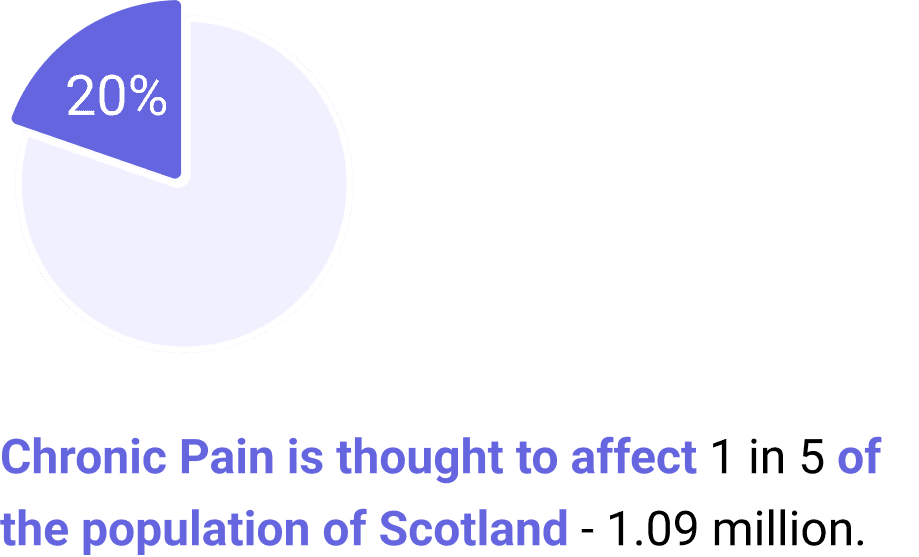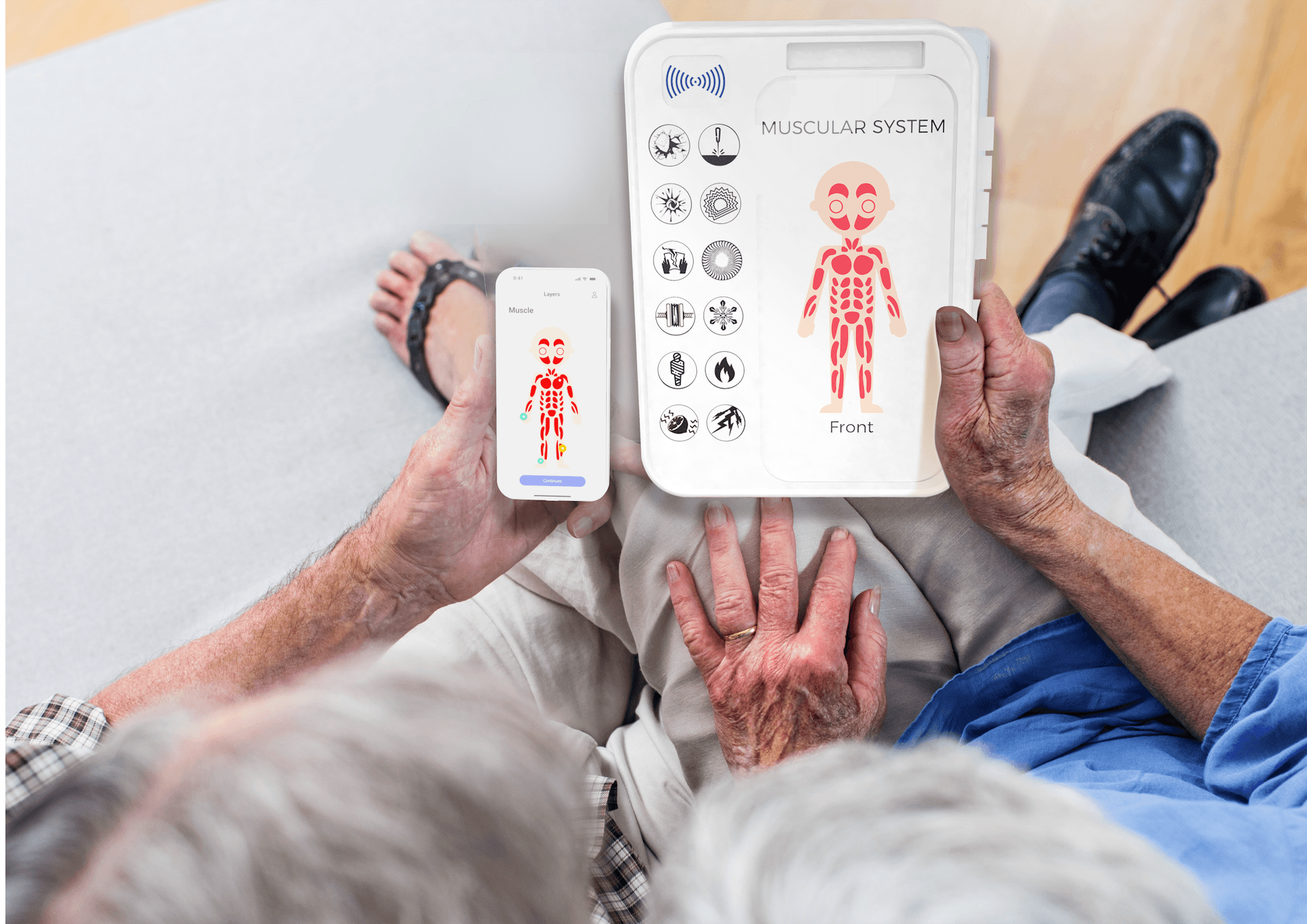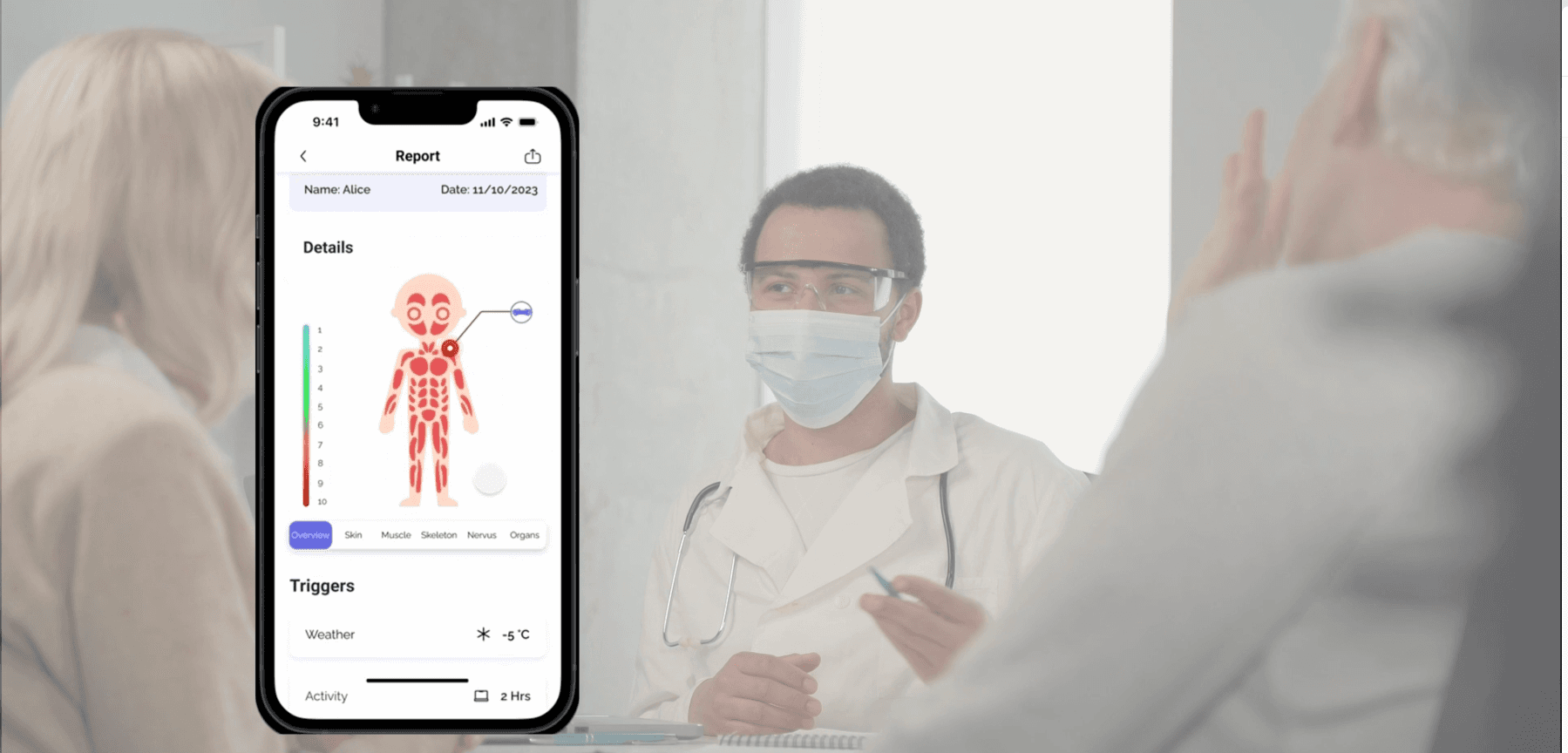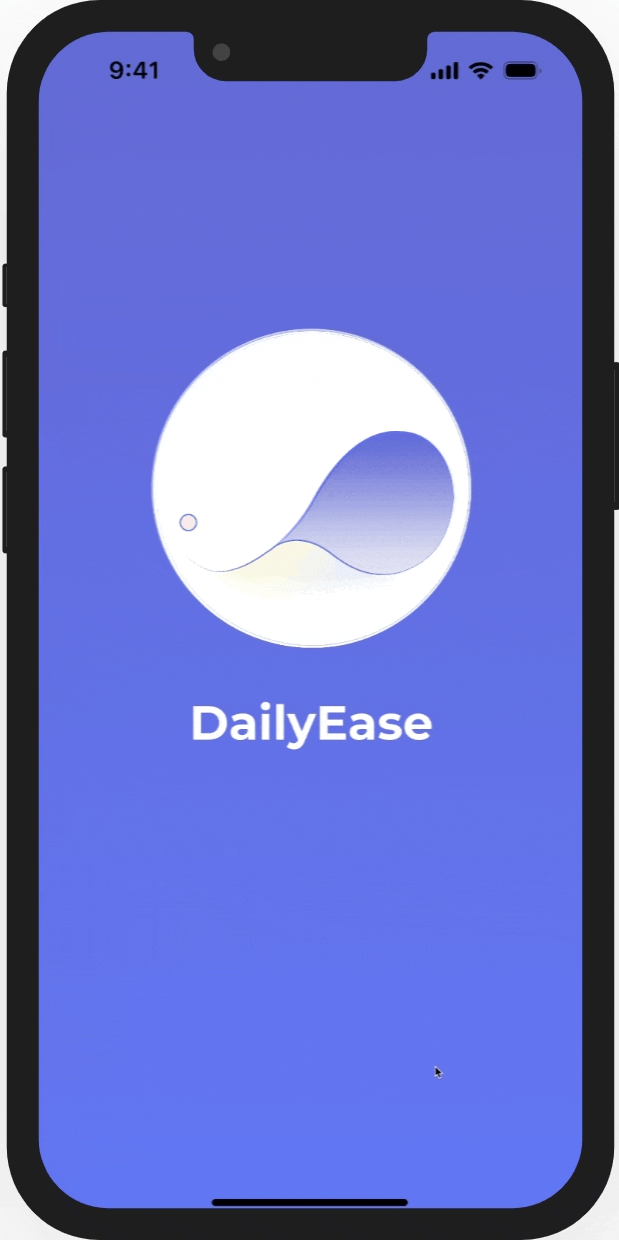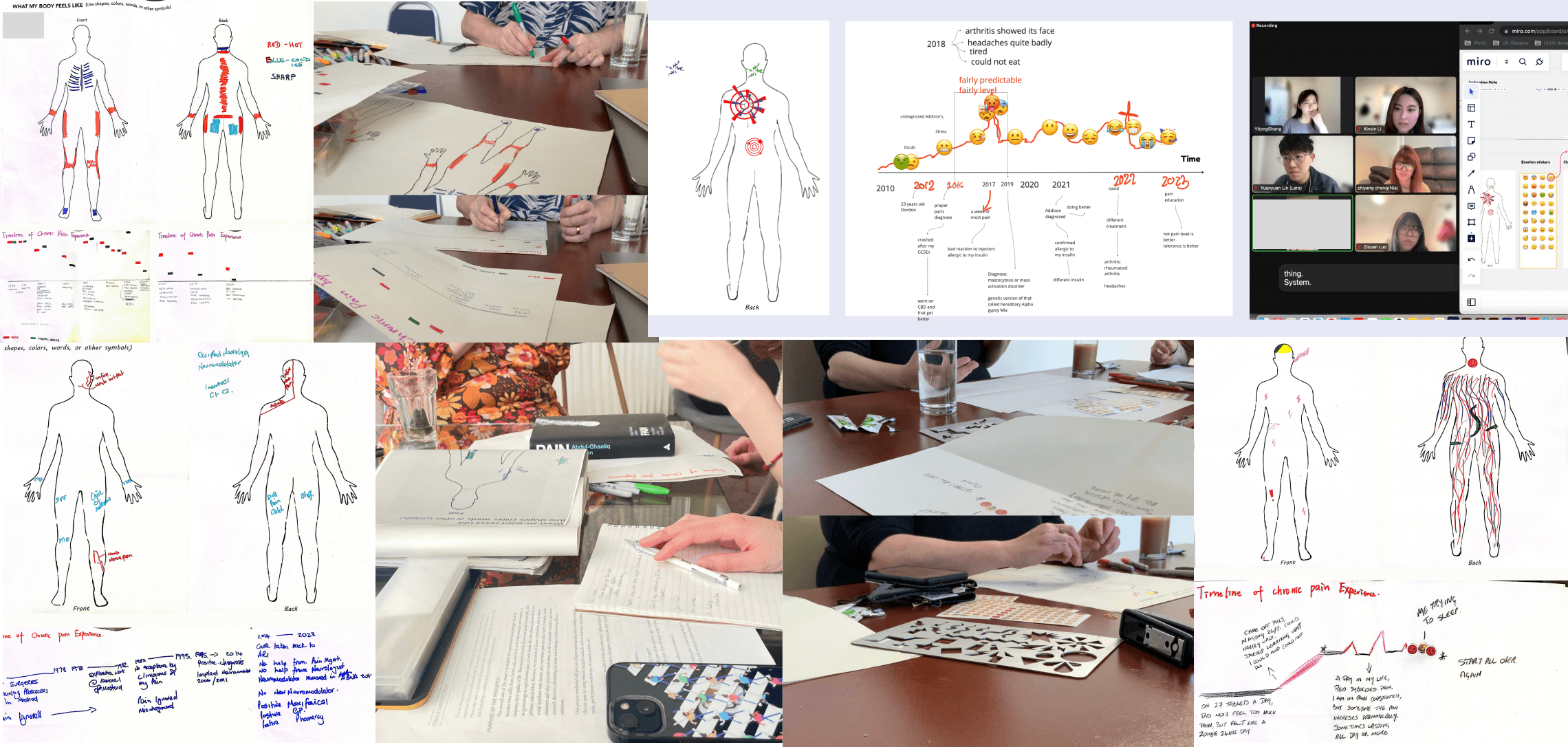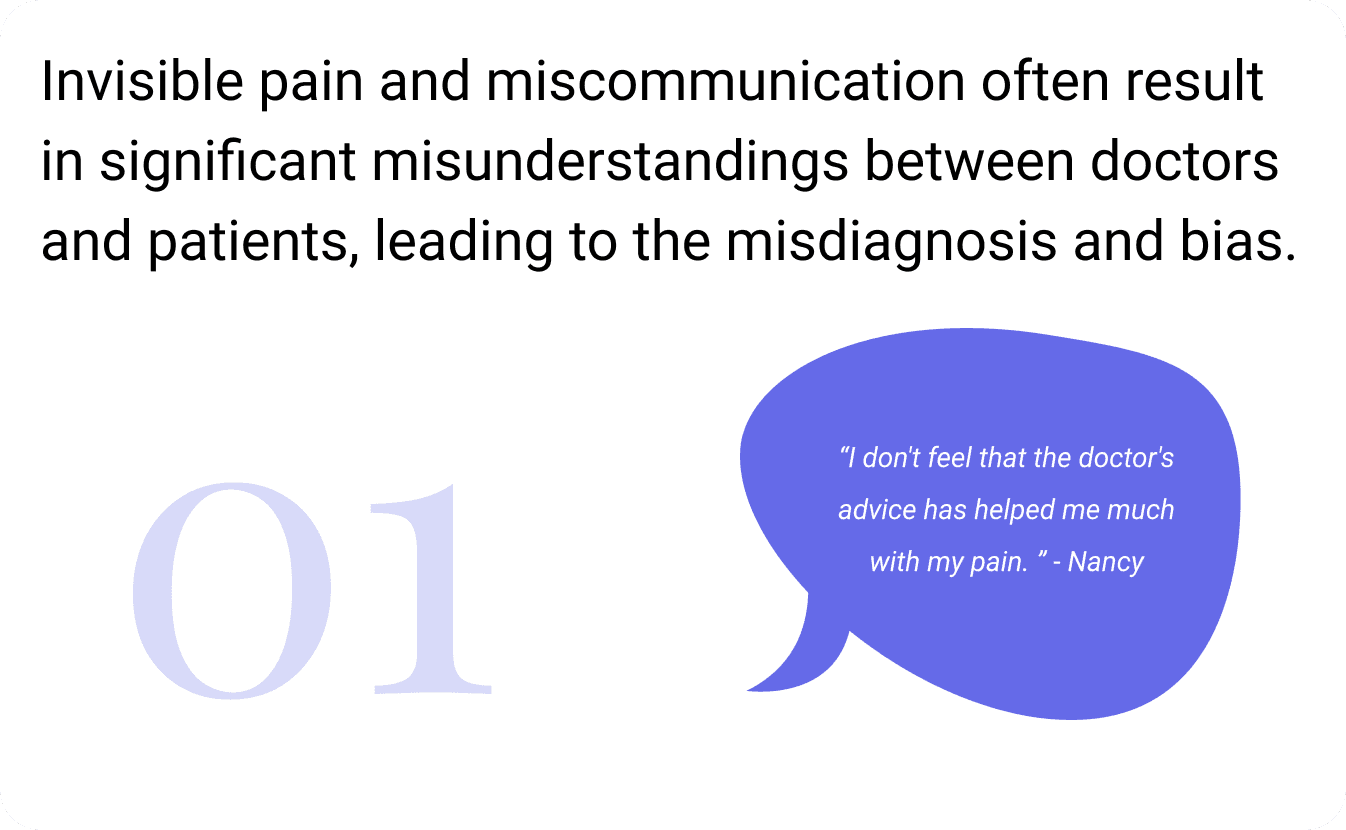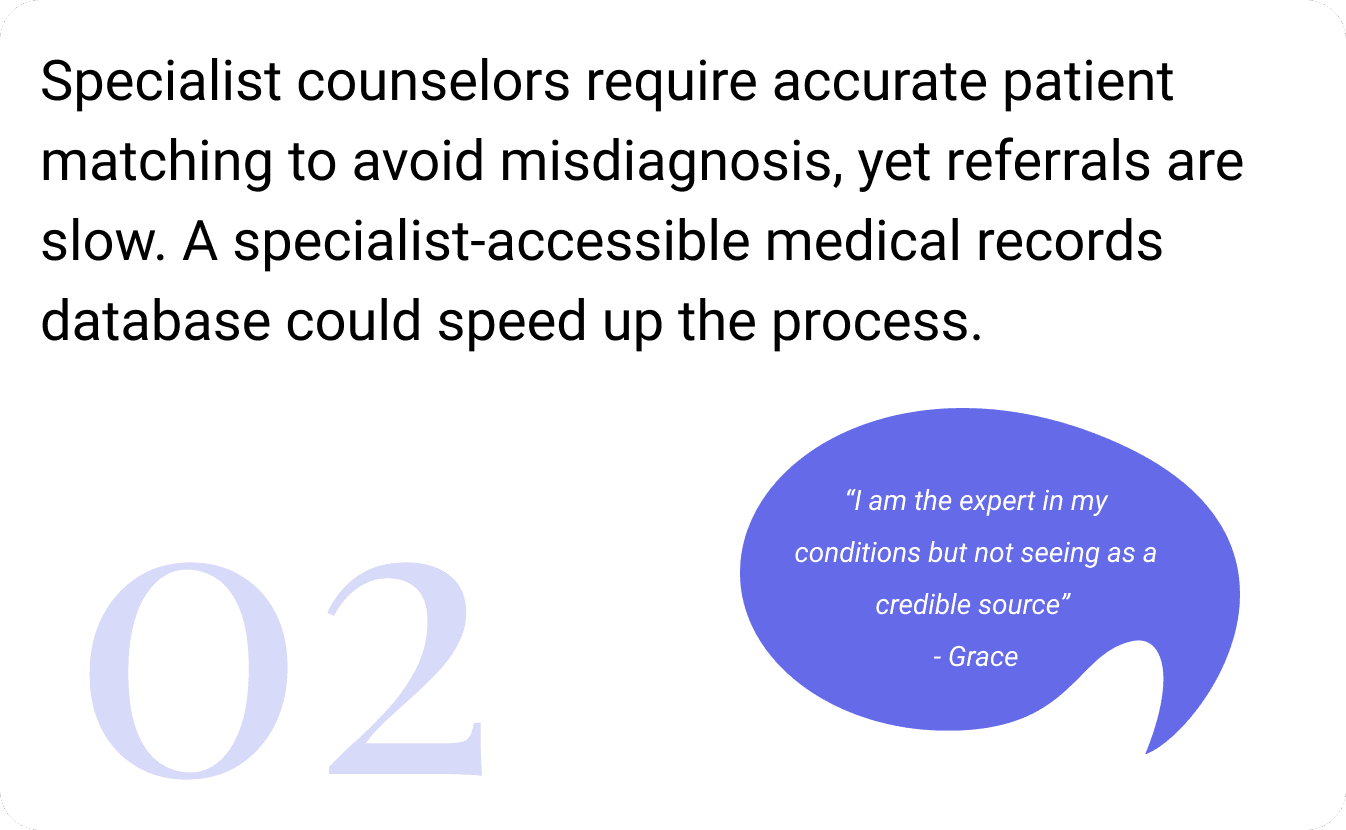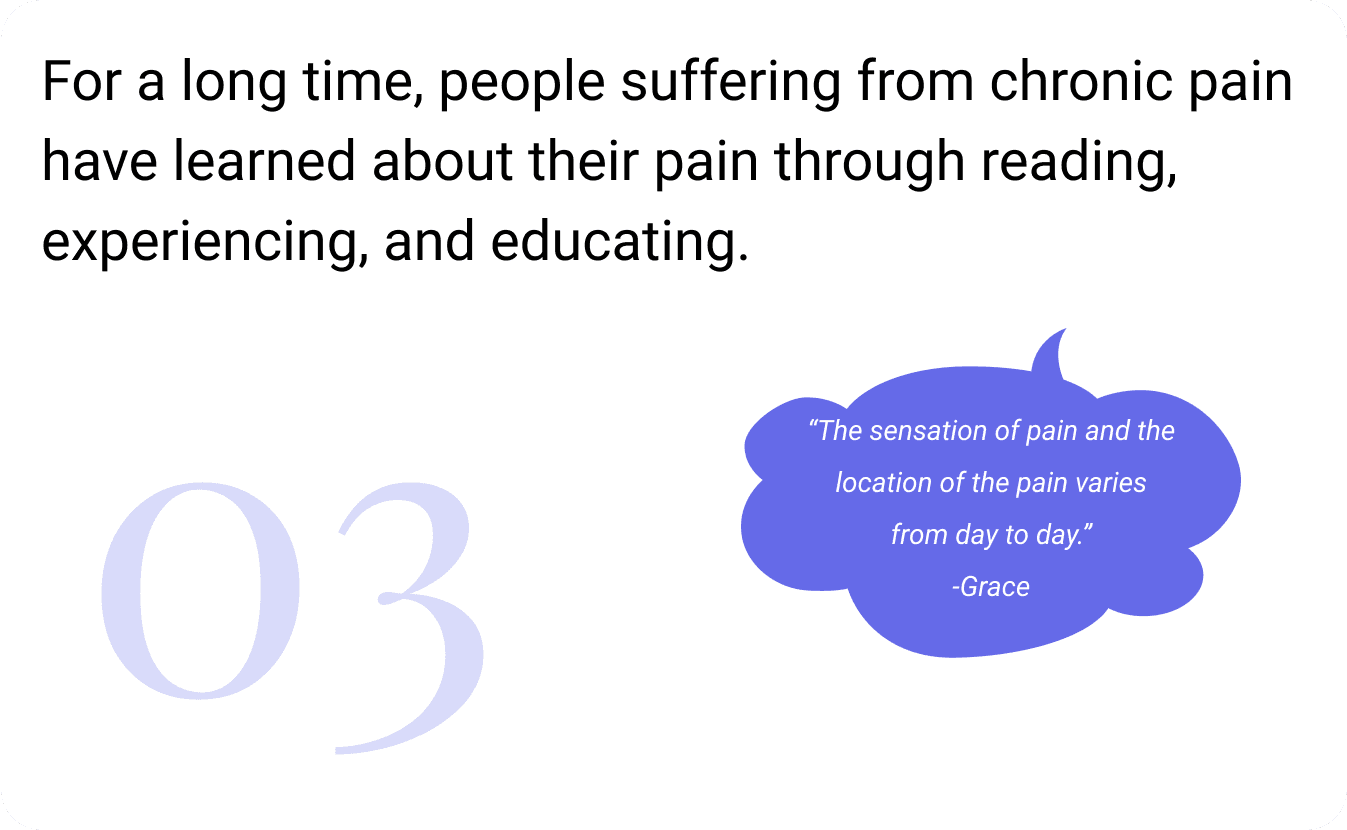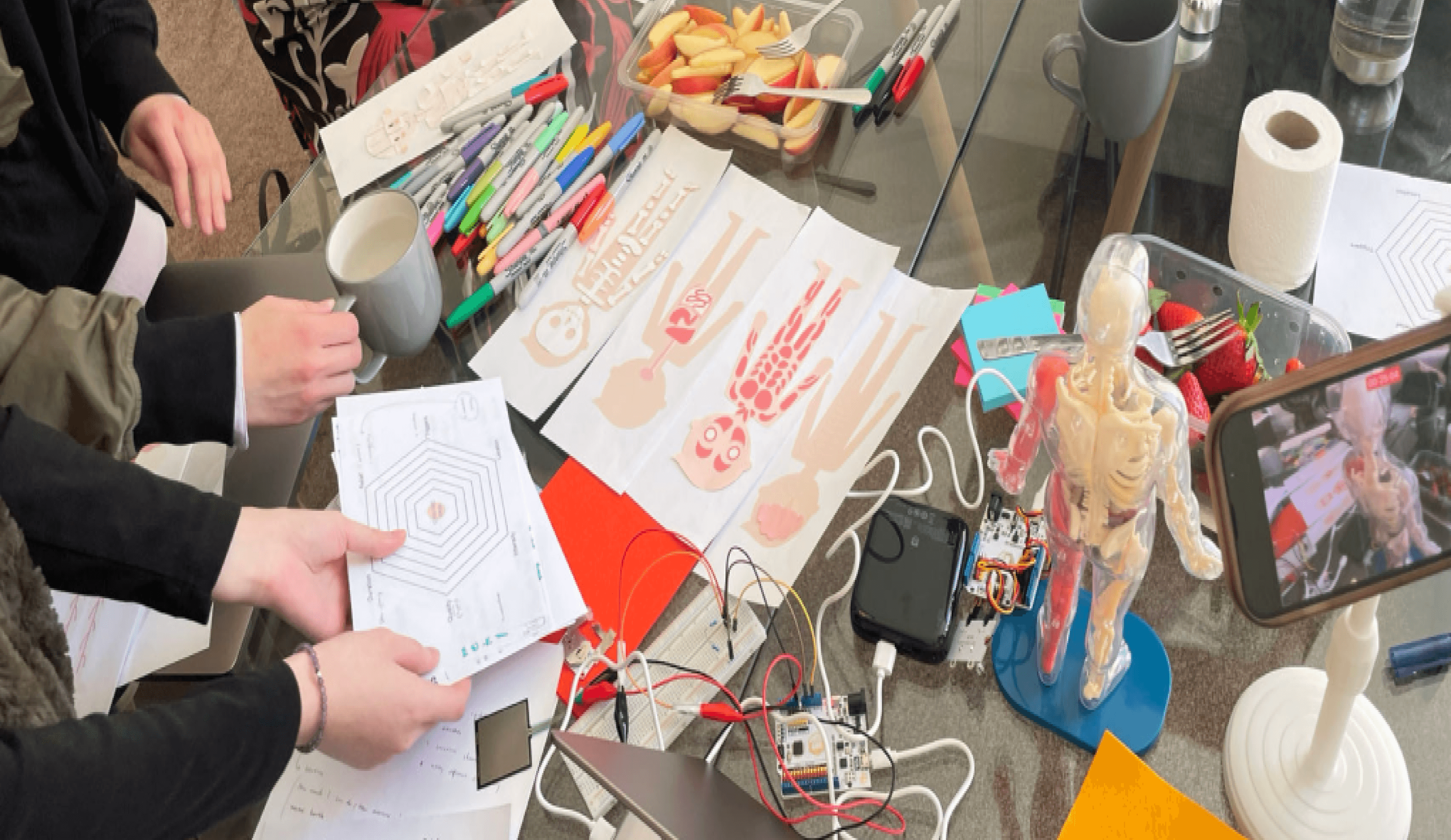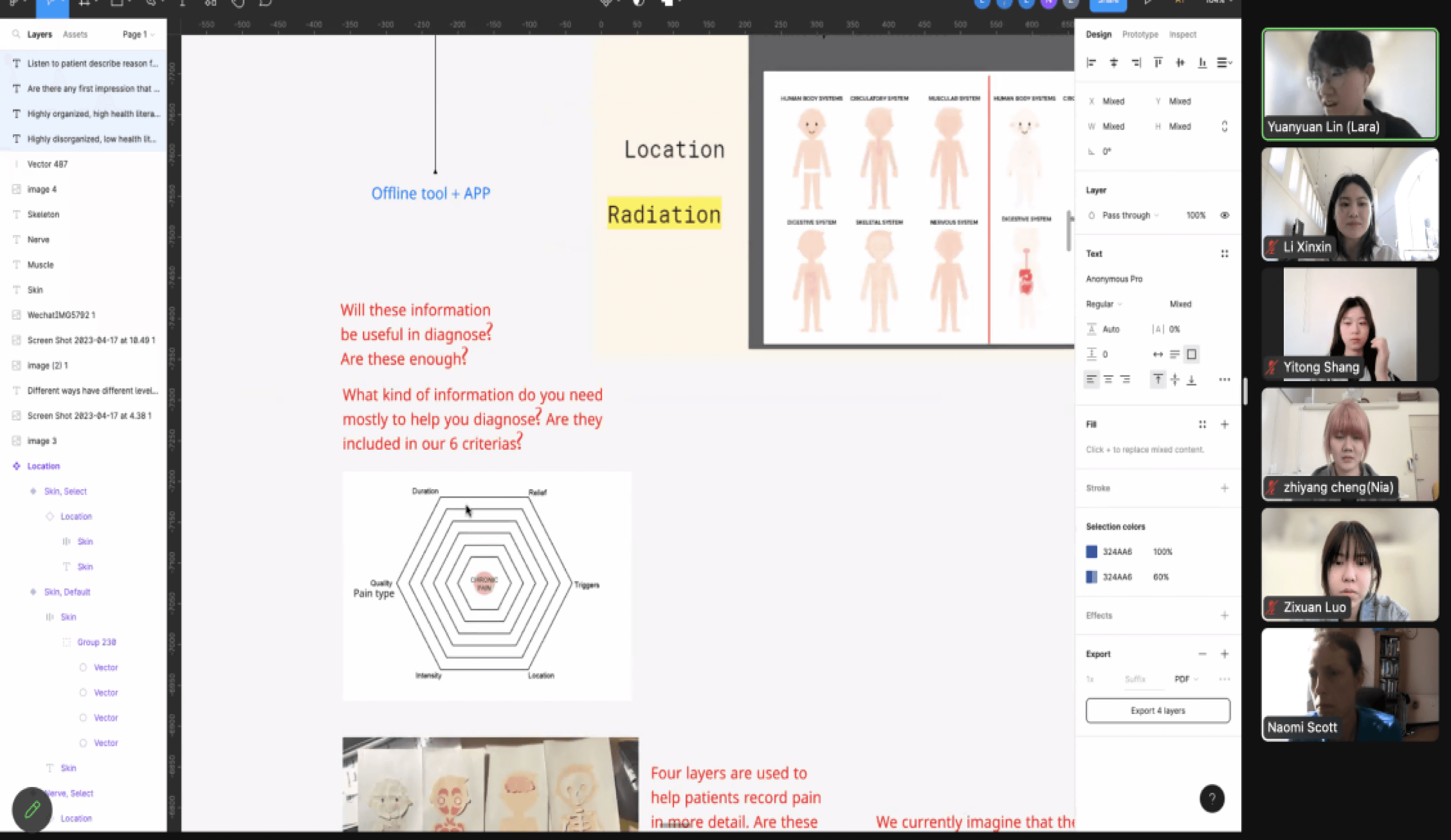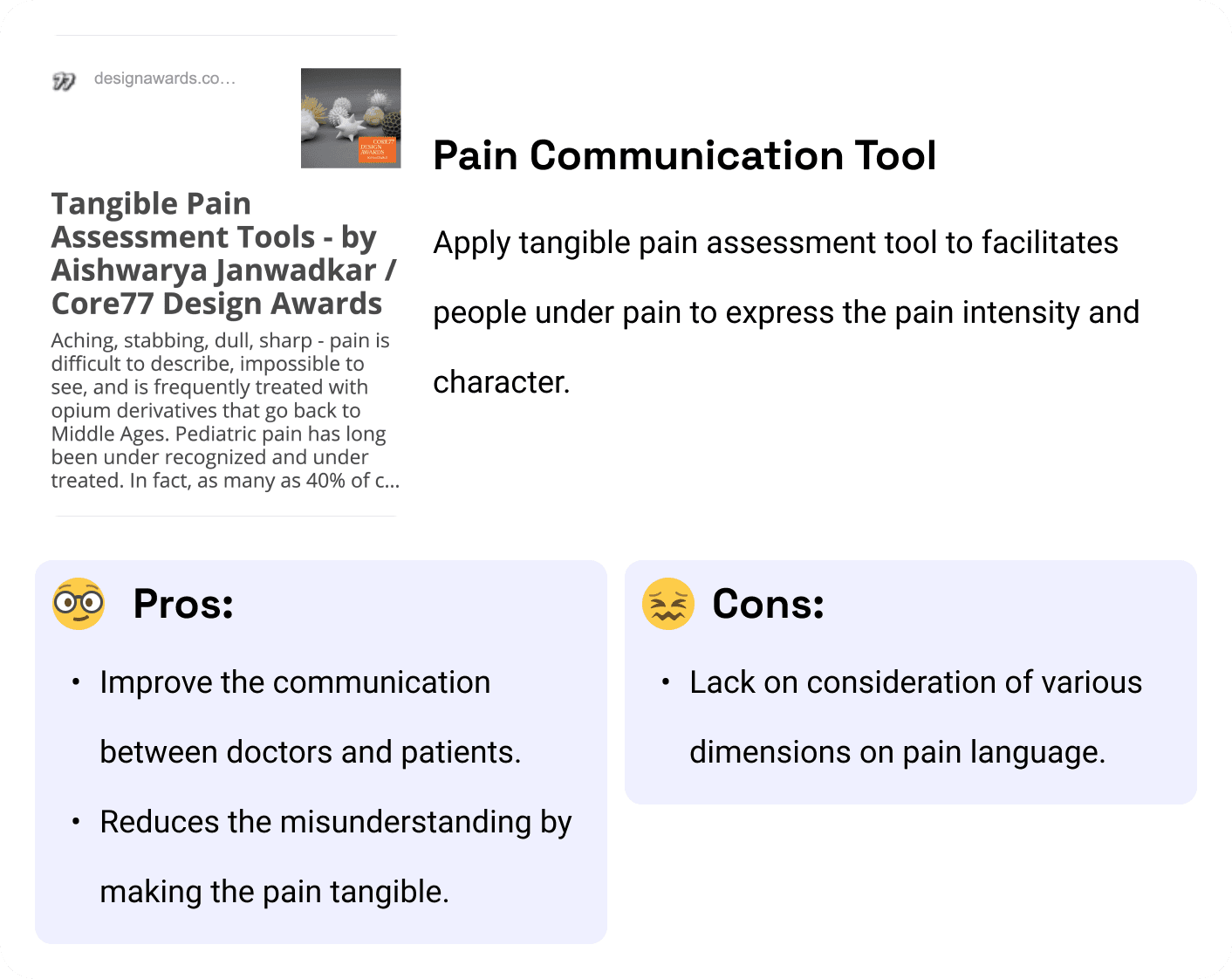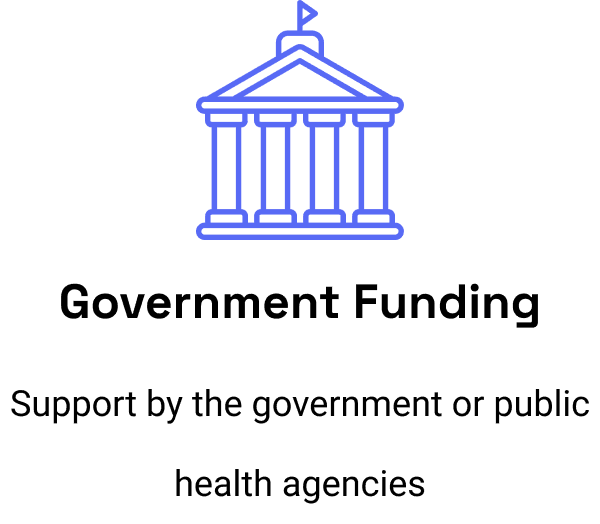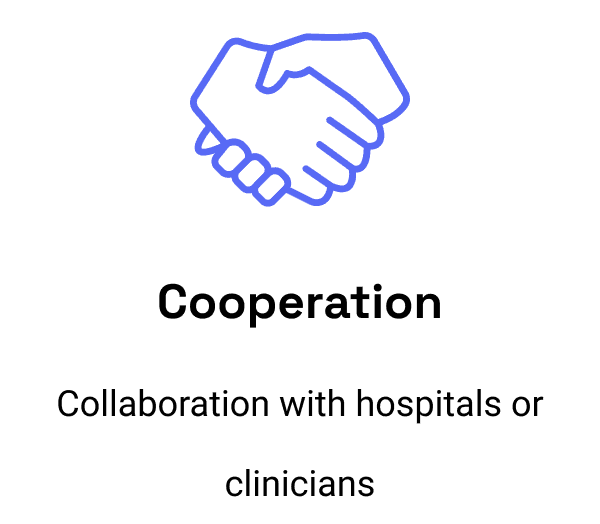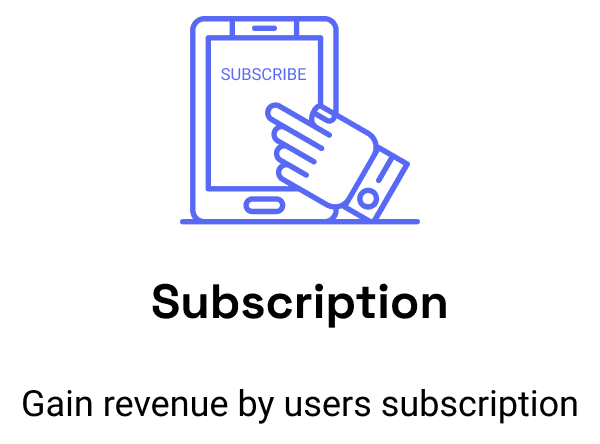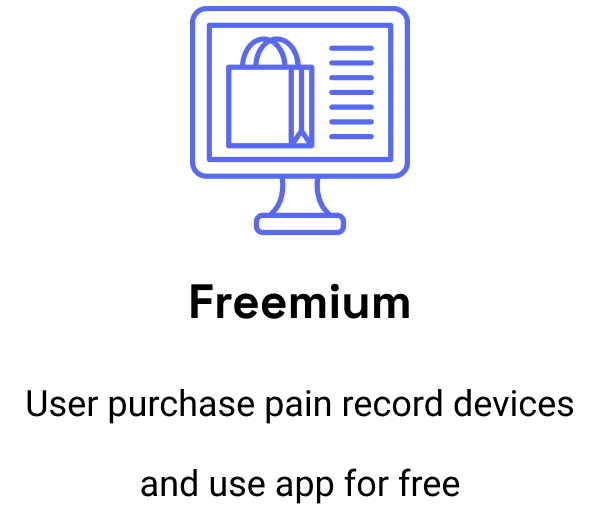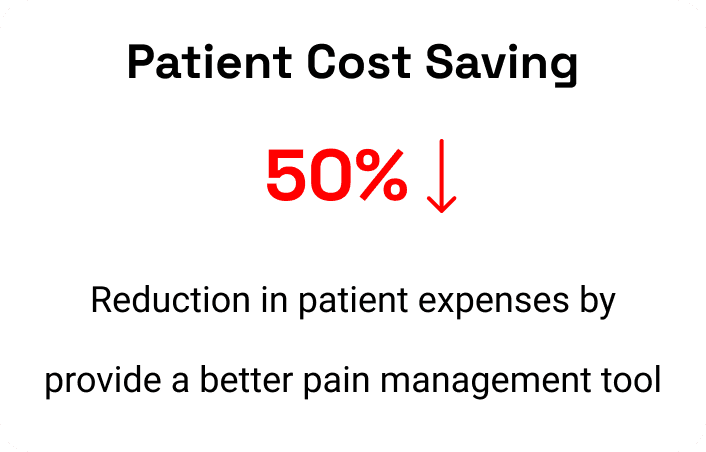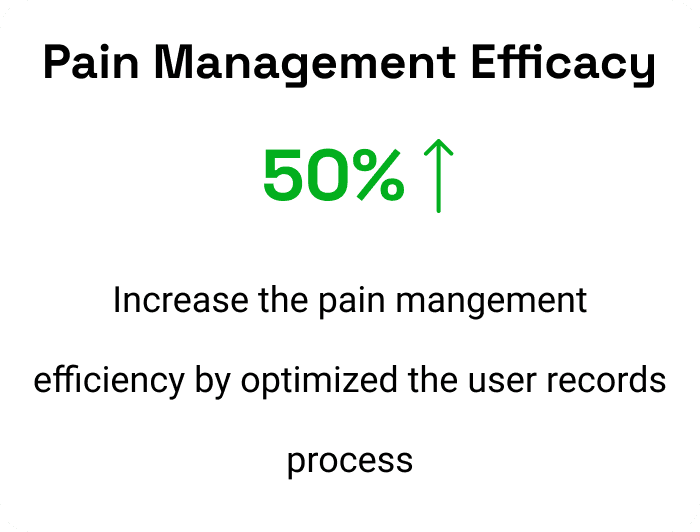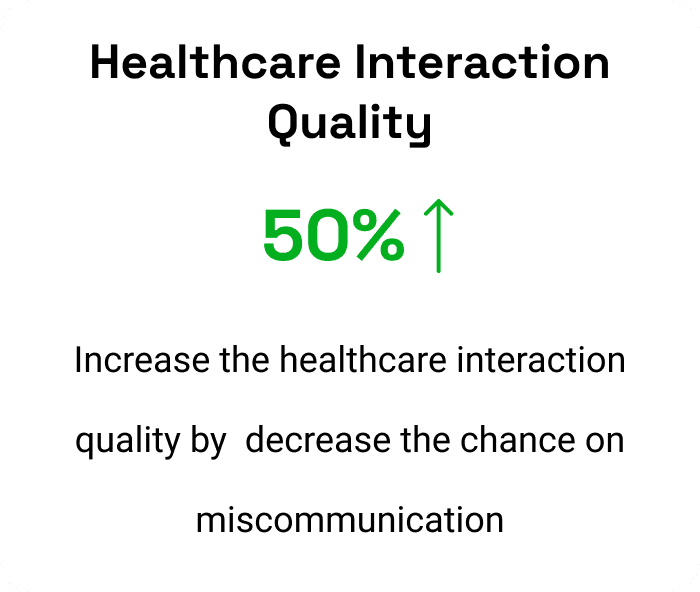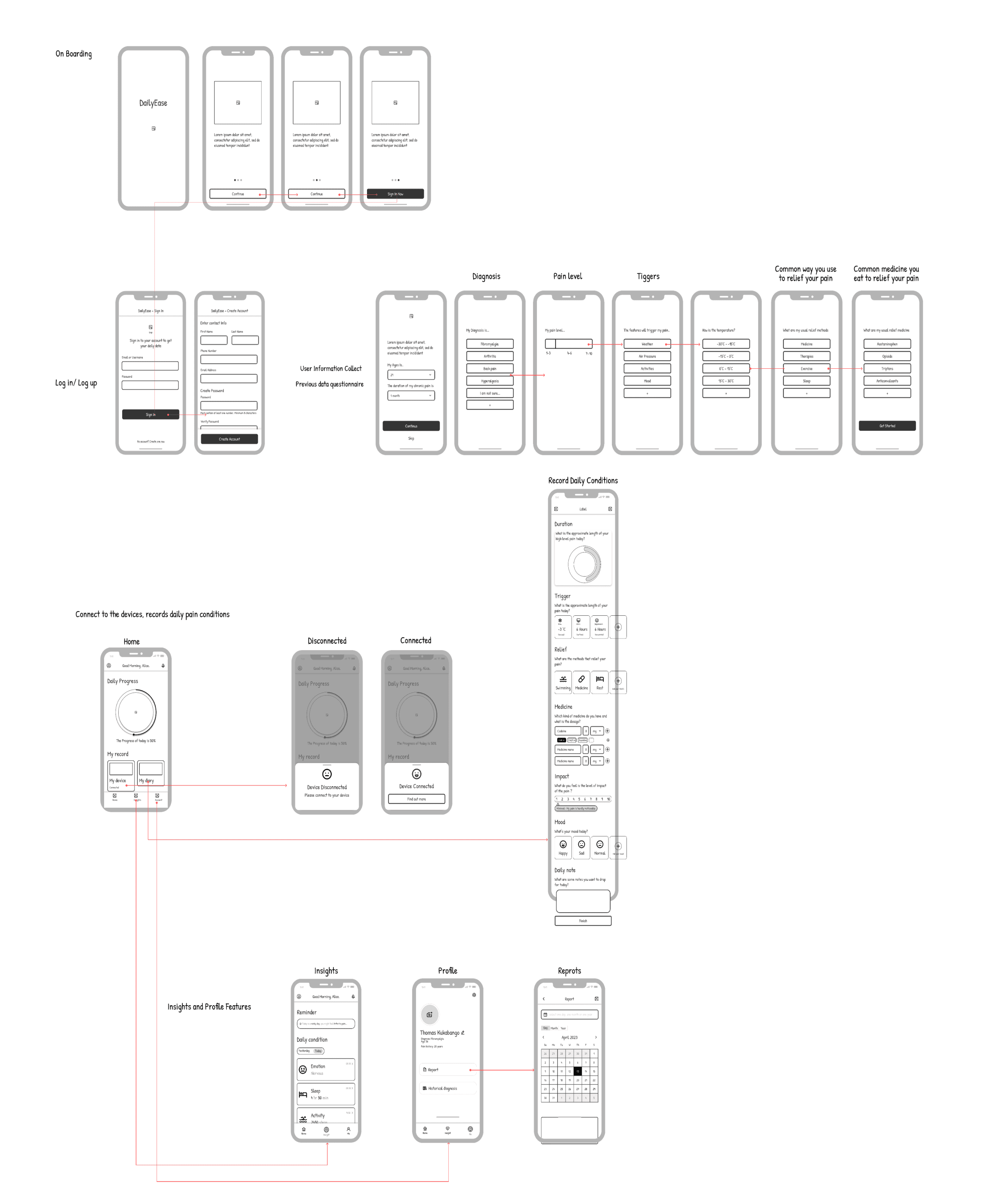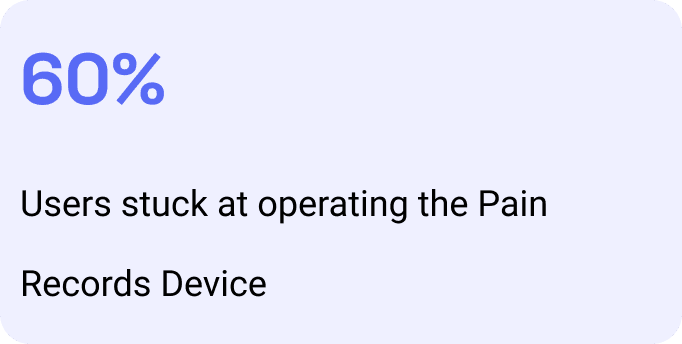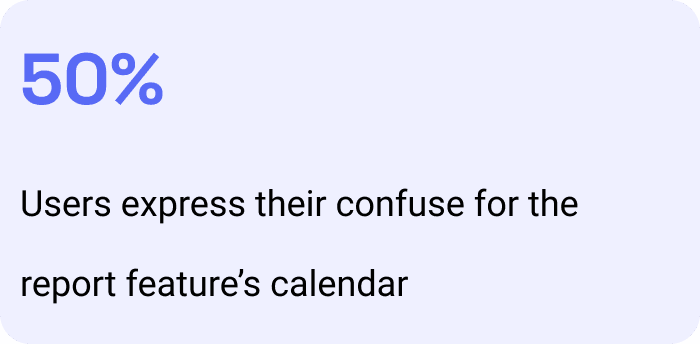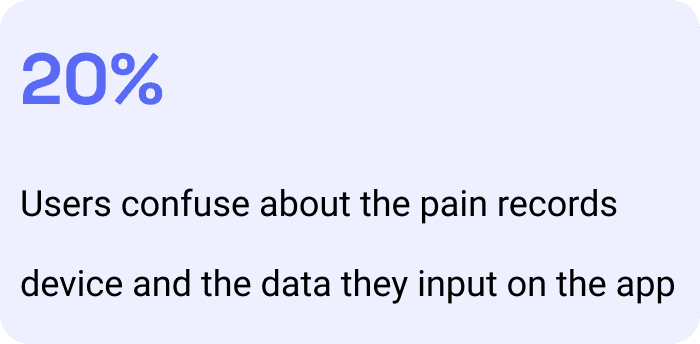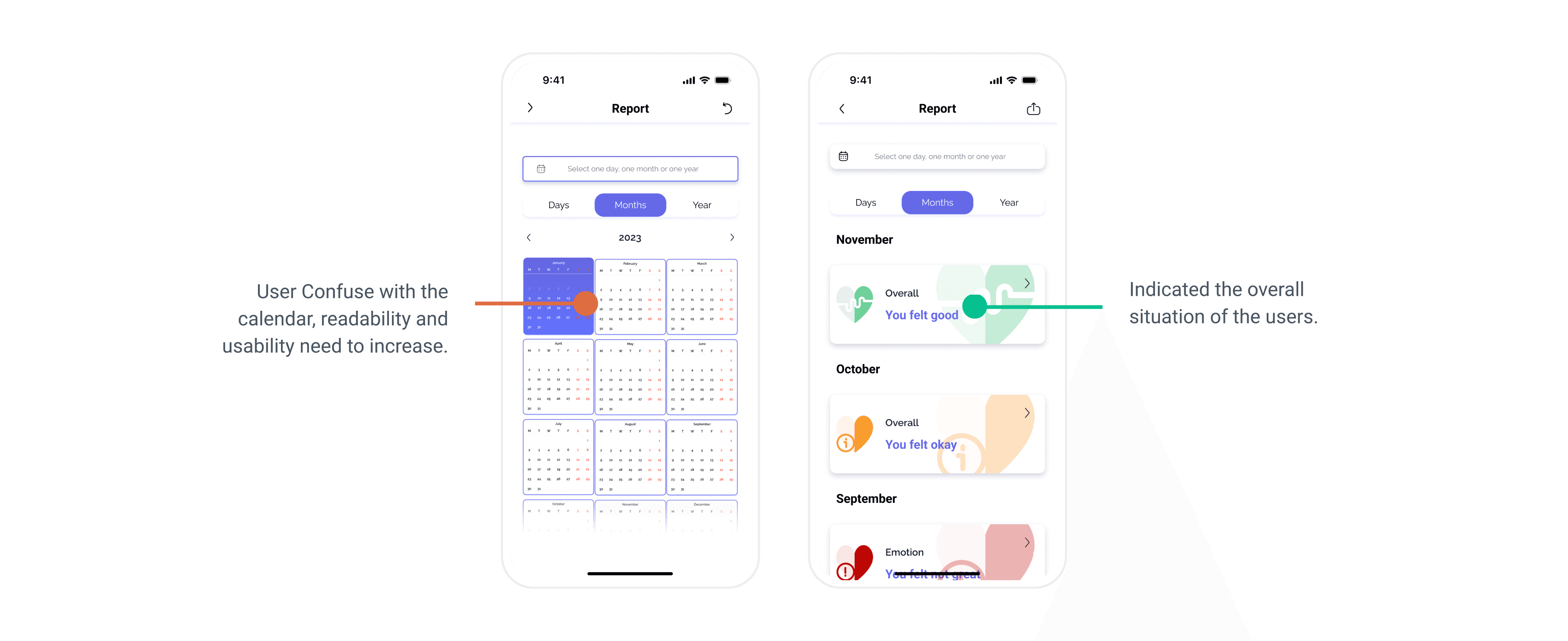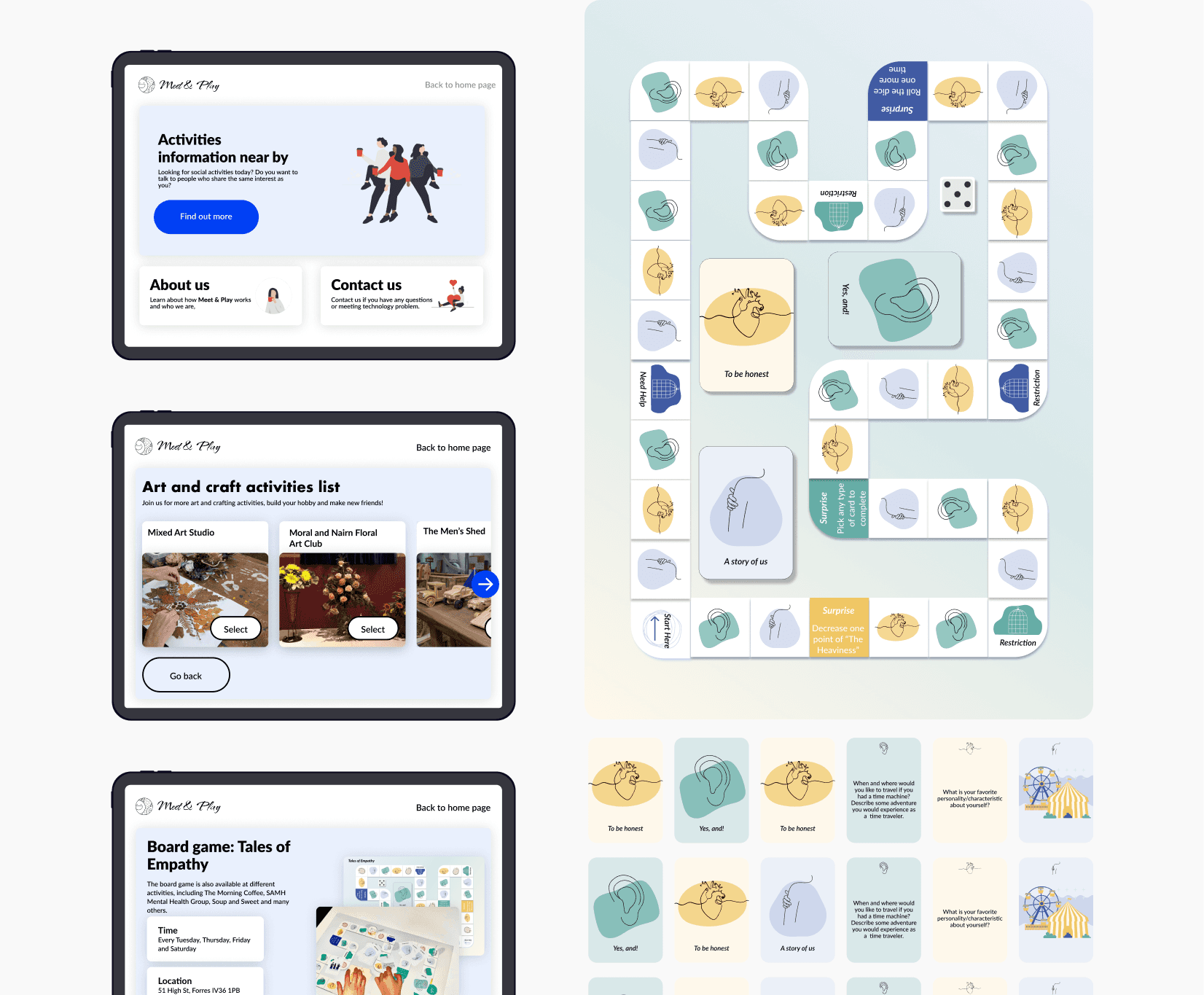DailyEase
DailyEase serves as an application and an interactional record device designed to facilitate communication between chronic pain patients and professional consultants. It engages individuals experiencing chronic pain, recording pain-related data daily in an easily accessible and enjoyable manner.
My Role
Design Research Leader
Responsible for primary research, co-design workshop, and define user pain points.
UX and UI Designer
Responsible for delivery wireframe and high-fidelity prototype for DailyEase application.
Tools
Figma/Miro/Blender/Arduino
Teammate
Xinxin Li/Yitong Shang/Yuanyuan Lin/Zhiyang Cheng
Duration
Feb 2023 to May 2023
Award
Nominated for the 2024 UX Design Award.
Problem
How might We Close the Communication Gap between Chronic Pain Patients and the Medical Specialists?
Solutions
DailyEase Application and Records Device
Users Document Pain-relevant Data with Records Device and the Application
Users Generate a Report and Show it to the Clinician during the Medical Encounter
The report feature provides data and information that pain specialists or doctors need to be aware of for diagnosis. These data significantly facilitate communication between patients and doctors.
Report provides to the clinicians
Final Application User Interface
Onboarding
Gather data encompassing the initial diagnosis, intensity of discomfort, length of symptoms, catalysts, medical background, and alleviation from the first-time user.
Landing Pages

Records Tablet Interaction
Interaction and Control the Records Device
I designed the animations to assist the users in learning and adopting the Pain record device.
Daily Record: Users Record Pain Situation
The Daily Record feature engages users in recording their daily pain situation, including duration, triggers, relief, medicine, impact, and mood domains.

Document the condition within Daily Record

Insights Feature
Insights: Provide Data to Help User Practice Self-management
This functionality offers individuals' daily health statistics to aid in producing personal analytical observations. The development of the insight feature took into consideration the requirements of the users, ensuring they could utilize these insights for personal pain management.
Report: Facility Clinician Diagnose
Users compiled comprehensive health summaries from assorted durations, encompassing daily, monthly, and yearly data. They can offer the expert details of acute discomfort instances during interaction to aid diagnosis.

The user checks the general report
Record Device Prototype
Pain Record Device: Enable Users to Record Pain Types, Pain Location, and Quality
Accompany with the app, we also designed a physical device containing an NFC tag reader, body systems figures, and pressure sensors, enabling users to record the information for pain types, location, and intensity.
DailyEase Pain Records Devices
UX Research
Primary Research: Employed Engagement Tool during Interview
We conducted semi-formal interviews with the six primary stakeholders; the interview time ranged from 30 minutes to 1 hour. During the interview workshops, we provide a body shape board and various color markers to let the participant express the pain by any shape, color, word, or symbol.
Interview with Engagement Tools
Key Pain Points of Users
Challenge
Without Medical Expertise, How can We Create Beneficial Solutions for Chronic Pain Patients?
I Decided to Adopted Co-design: Invited the Users Participate into the Design Process.
We adopted Co-design as a design methodology to include primary and secondary stakeholders into all design process, to ensure the solution meet the needs of stakeholders.
Meet the Co-Designers
Step 1: Conceptualize
Because Nancy, Marjory and Chris, our co-designers, had no previous expertise in design, it was crucial to equip them with guiding principles for design. We engineered several tools to assist them in articulating discomfort in six sectors: location of pain, varieties of pain, degree, causes, alleviation, and duration.
Tools Provided to Express Various Pain Domains
Step 2: Co-design Workshop with Chronic Pain Patients
We then hosted co-design workshops with co-designers, to discuss the pain language with the provided tools, and brainstorm the design.
Co-Design Workshops
Step 3: Understand the Information Clinicians Need to Know
We subsequently arrange a seminar involving a torment expert from NHS (UK National Health Services) to discuss findings from the prior co-design workshop and establish the data and intel that healthcare professionals require for diagnosis.
Online Workshop with Naomi - Pain Specialist in NHS
Business Scope
Competitor Analysis: Determined the Available Offerings, Benchmarked the Features, and Identify the Design Trend.
To identify the potential market of the final design outcome, I conducted a competitor analysis. According to the research, the existing offerings are lied into three categories: Pain Relief Tools, Self-management Tools, and Pain Communication Tools.
Potential Revenue Model: How Can DailyEase Carry Revenue?
Product Success Metric
Prototype and User Text
Wireframe and User Flow
Based on the outcomes from our collaborative design workshop, I constructed a user-flow for an application. This platform allows users to document their pain data, provides insights for personal management, and presents pain-related information to medical professionals during consultations.
User Test: Three rounds with 10+ stakeholders and users
I conduct users test at various stage of the product development. So far, the DailyEase had tested for three rounds, and we iterated the product twice according to users test result.
Low-fi Test: We tested the low-fi prototype with three users before we delivery the Hi-fi prototype.
User Test: I hosted a workshop, to test the first Hi-fi prototype with stakeholders.
The usability test participants included chronic pain patients, pain specialists, and researchers.
User Test Task Completion Result
Iteration 1: Increase the usability of interaction between Pain Records Devices and Application
Iteration 2: Increase the usability for reports feature
Left: Before Right: After Iteration
Takeaway
The DailyEase project was a profound exercise in empathy-driven design, where stakeholder engagement was crucial to our success. Throughout the project, we built strong connections with stakeholders, whose insights deeply influenced our design decisions, driving us to deliver highly tailored solutions to meet their needs. Despite challenges such as time constraints, development hurdles, and funding shortages, the commendations received during our testing phase greatly validated our approach.
This experience underscored the designer's role as a pivotal bridge between needs and solutions, enhancing my skills in empathetic communication and stakeholder collaboration. Although DailyEase faces obstacles to its launch, the lessons learned and awareness raised about chronic pain will hopefully inspire and inform future design endeavors.
